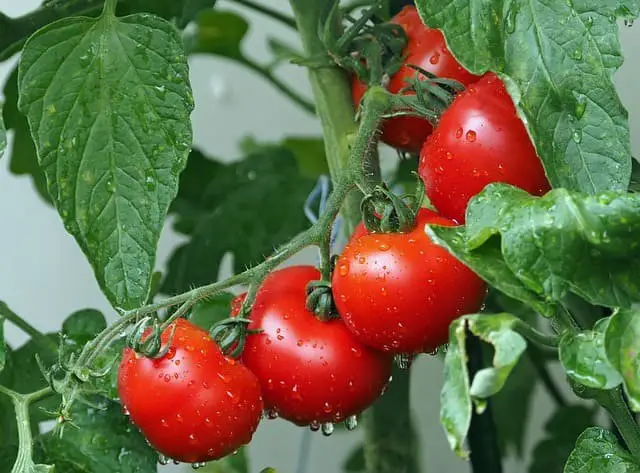16 Different Types Of Palm Trees In Georgia Youll Love (With Pictures)
Are you ready to bring some tropical charm to your yard? Palm trees are an excellent choice, and with many varieties thriving in Georgia’s climate, you’re sure to find one that fits perfectly. In this post, we’ll delve into the world of palm trees, exploring 16 popular types that do well in Georgia. You can expect to learn about each tree’s height, width, and planting requirements. Let’s get started!
There are California Fan Palms, Canary Island Date Palms, Chinese Fan Palms, Coontie Palms, Dwarf palmettos, European Fan Palms, Mexican Fan Palms, Mule Palms, Needle Palms, Pindo Palms, Queen palms, Sabal Palms, Saw Palmetto Palms, Silver Saw Palmetto Palms, and True Date Palms. You’ll also discover the perfect way to plant palm trees in Georgia and how they can survive in the state’s climate.
With this comprehensive guide, you’ll be well on your way to creating a stunning palm tree landscape that’s uniquely yours.
Types of Palm Trees In Georgia
California Fan Palm (Washingtonia filifera).
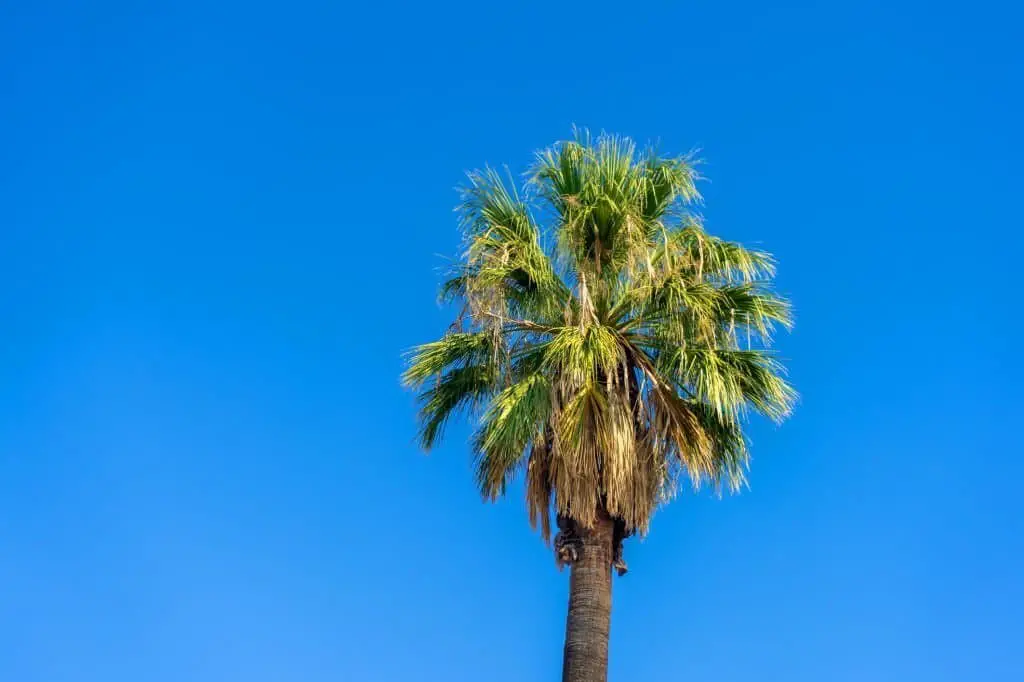
The California fan palm is an excellent choice if you’re looking to add some visual appeal to your home’s exterior. Its striking features include long, feathery fronds and a distinctive trunk covered in fibers, making it a standout among other palms. Native to the deserts of southwestern North America, this palm is remarkably resilient and can thrive in extremely hot and dry conditions.
However, it’s essential to note that it doesn’t fare well in cold weather and is best suited for USDA hardiness zones nine or higher. If you reside in an area with cooler winters, you can still appreciate the beauty of this palm by planting it in a large container and relocating it indoors when temperatures start to drop.
Canary Island Date Palm (Phoenix canariensis).
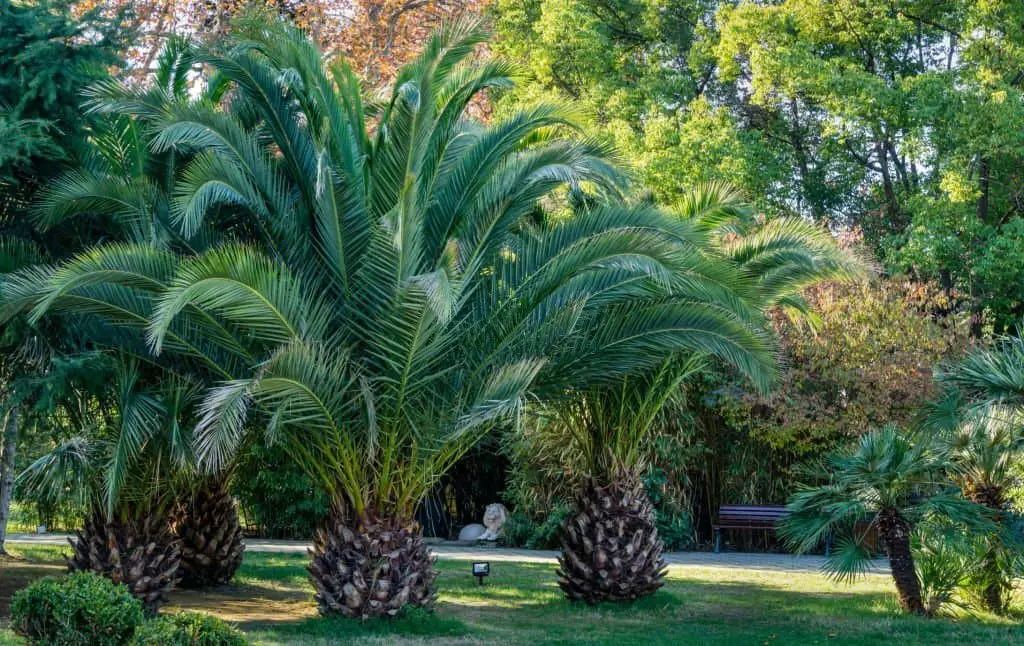
Native to the Canary Islands, the Canary Island Date Palm is an unmistakable species that boasts a singular, towering trunk supporting a canopy of substantial, stiff leaves. Aiming for heights of up to 60 feet, this palm variety has garnered widespread acclaim as one of the most sought-after options for landscaping in Georgia, where its striking appearance and robust growth make it a popular choice.
Chinese Fan Palm (Livistona chinensis).
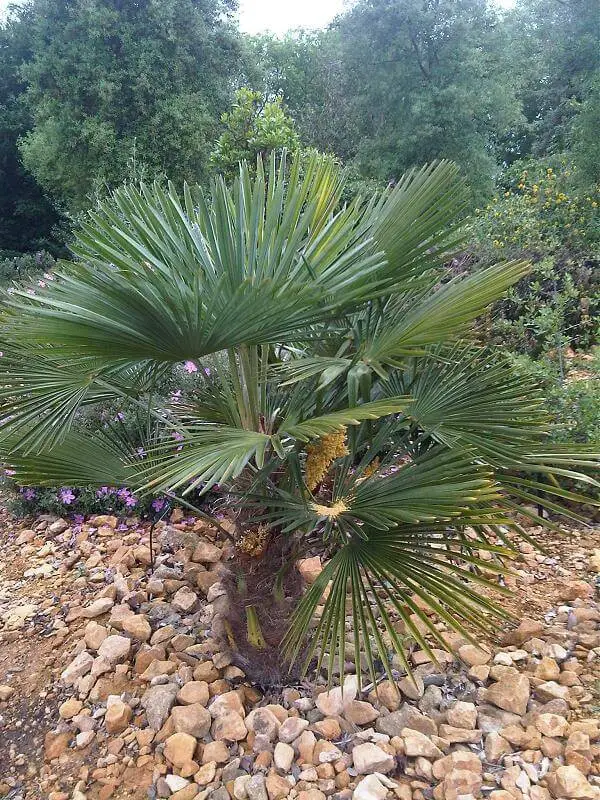
The Chinese fan palm has become a staple of ornamental landscaping in the southeastern United States. Characterized by its slow growth rate, this palm can reach heights between 20-40 feet. Its striking leaves are palmate, resembling hands, and can grow up to three feet wide. The leaves themselves boast a vibrant green hue with white spots and yellow margins. Notably, this species exhibits dioecious characteristics, with male and female plants existing separately.
Female Chinese fan palms produce small, yellowish-brown fruits approximately 1 inch in diameter. A testament to its adaptability, the Chinese fan palm thrives in a wide range of soil conditions and tolerates both full sun and partial shade. Its introduction from China in the late 1800s has made it a popular ornamental choice in the region.
Coontie Palm (Zamia pumila).
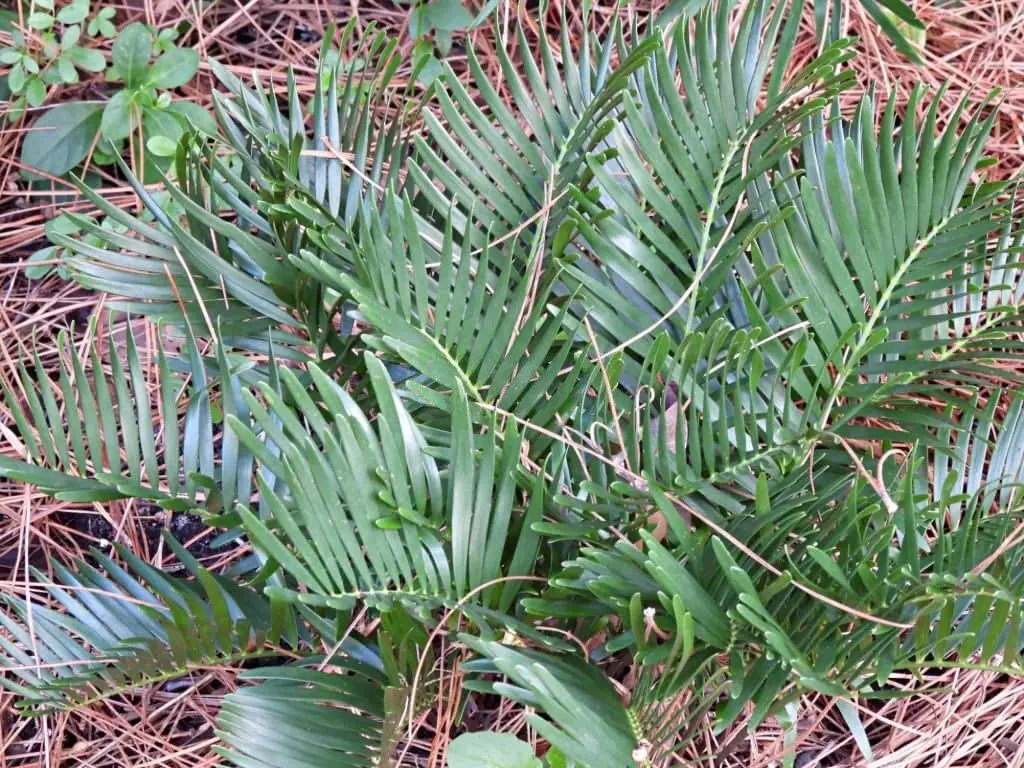
The Coontie Palm is a compact palm species that typically reaches heights of around 20 feet. Characterized by its slender trunk and unique foliage, the plant features leaves composed of numerous narrow, thread-like segments. Native to woodlands, swamps, and marshes in Florida and Georgia, this palm thrives in these environments.
Dwarf palmetto (Sabal minor).
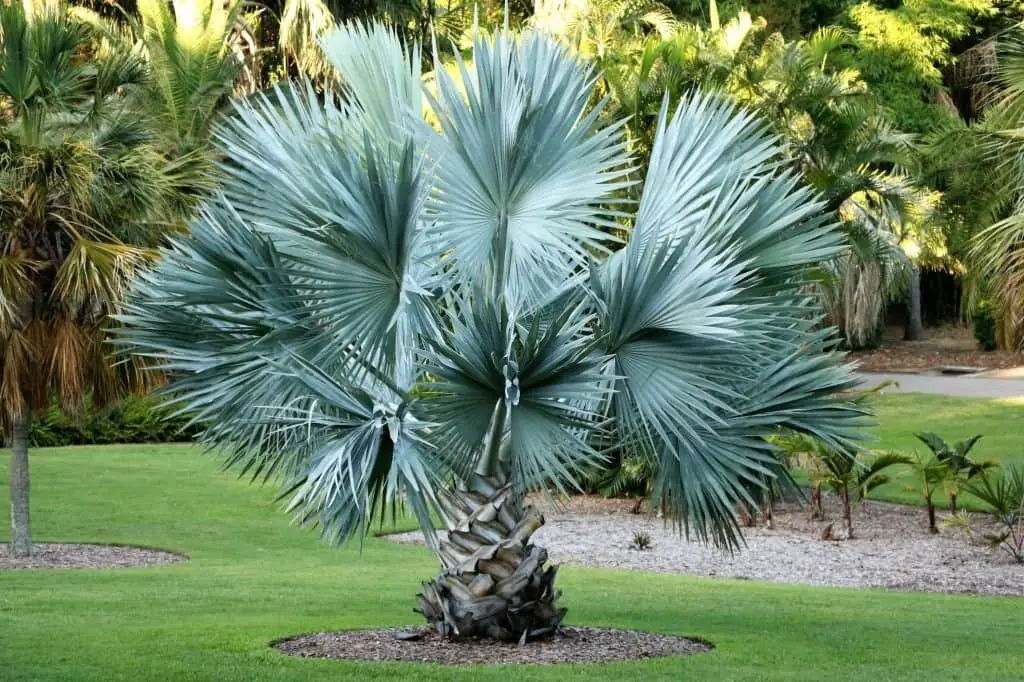
The dwarf palmetto palm tree stands at a modest height of approximately six feet, boasting a single trunk adorned with leaves that spiral around it. The leaves themselves are a vibrant green hue and feature sharp, serrated edges. Native to coastal regions of Georgia, this compact palm is frequently utilized as an ornamental plant in residential landscaping endeavors.
European Fan Palm (Chamaerops humilis).
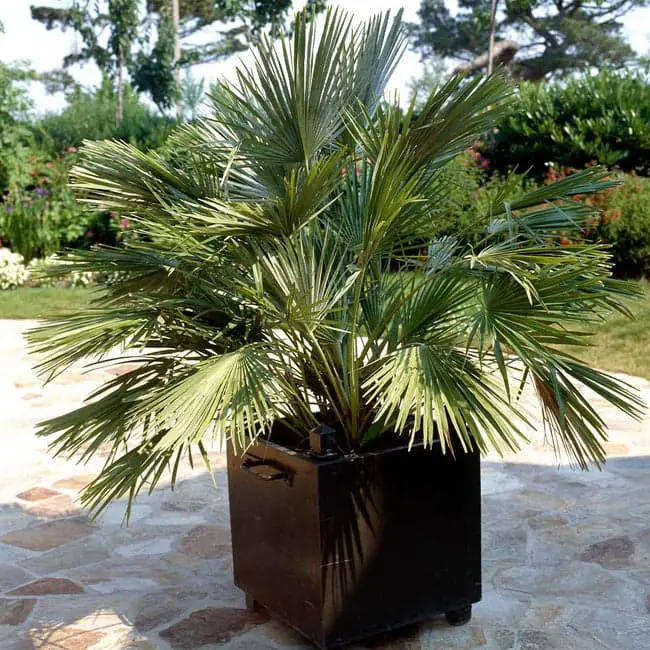
The European fan palm is a compact to medium-sized palm species that can reach heights of up to 20 feet. Its palmate fronds can grow up to three feet long, boasting a unique hand-like shape.
Native to the Mediterranean region, this palm has been successfully introduced to other parts of Europe, Asia, and North America. What’s more, it exhibits remarkable hardiness, capable of withstanding brief periods of snow and ice, as well as tolerating drought and salt spray conditions.
Given its adaptable nature, the European fan palm is an excellent selection for a landscape palm in Georgia, offering a reliable choice for landscaping enthusiasts seeking a robust yet elegant addition to their outdoor spaces.
Mexican Fan Palm (Washingtonia robusta).
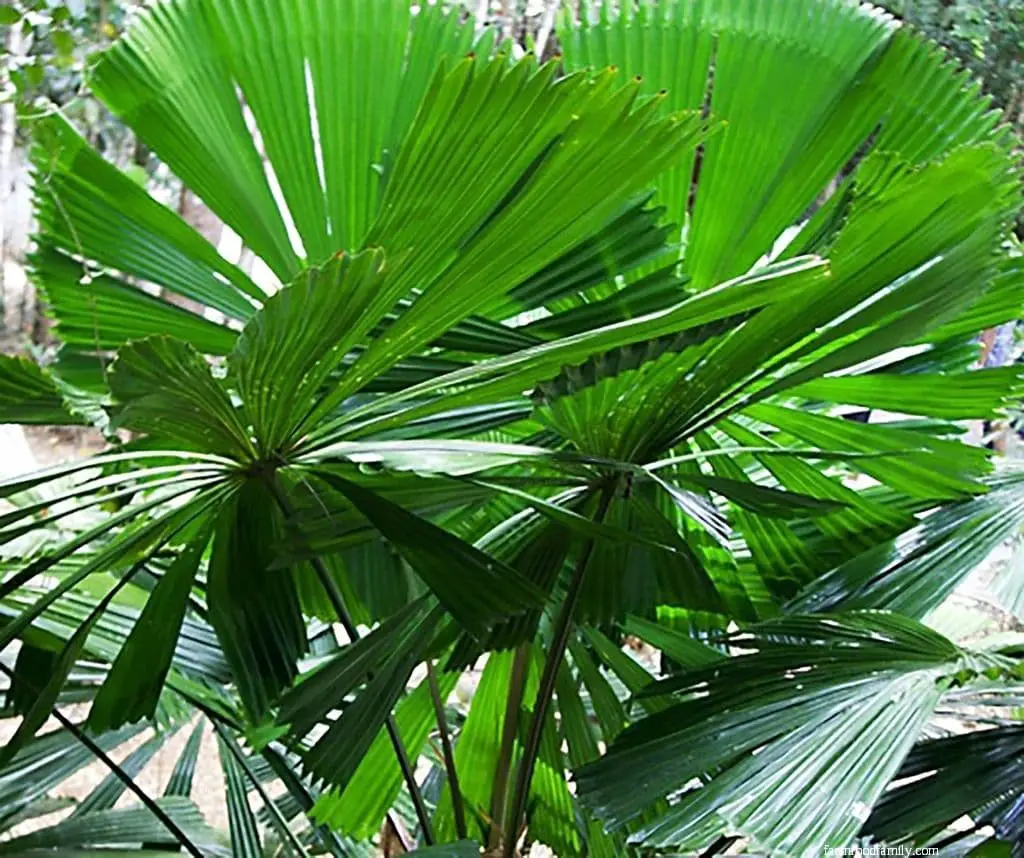
In Georgia, the Mexican Fan Palm takes center stage as the most widely planted palm species. This majestic tree can grow up to 50 feet tall, boasting a sturdy trunk with a diameter of 18-24 inches. Its leaves are a striking green hue with a subtle blue-green tint, featuring 20-30 narrow and delicate leaflets that resemble fingers. As its name suggests, the Mexican Fan Palm hails from Mexico, where it has evolved to thrive in dry conditions.
Not surprisingly, this palm is also drought-tolerant, making it an attractive option for gardeners in the Atlanta area and beyond.
Mule Palm (X Butiagrus nabonnandii).
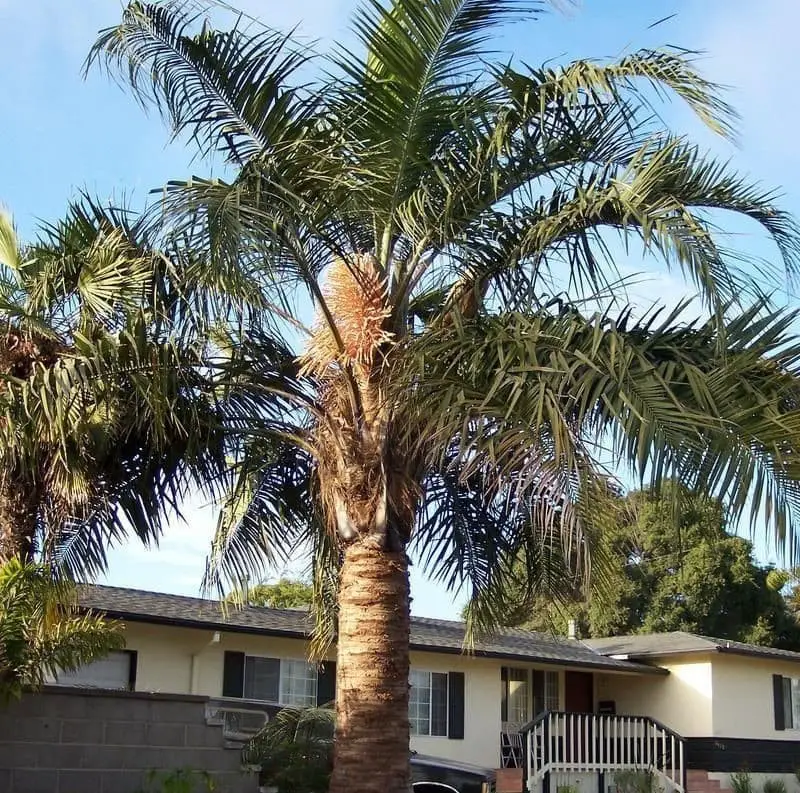
In the Arecaceae family, the Mule Palm is a unique species that can be found only in Georgia. This palm thrives in moist environments within forests. Notably, it reaches a relatively modest height of around 15 feet. One of its defining characteristics is its pinnate leaves, which typically feature around 20 leaflets each. The plant’s flowers are white and clustered at the base of the leaf, while the fruit takes the form of a drupe, measuring approximately an inch in diameter when ripe.
At maturity, the fruit turns black.
Needle Palm (Rhapidophyllum hystrix).
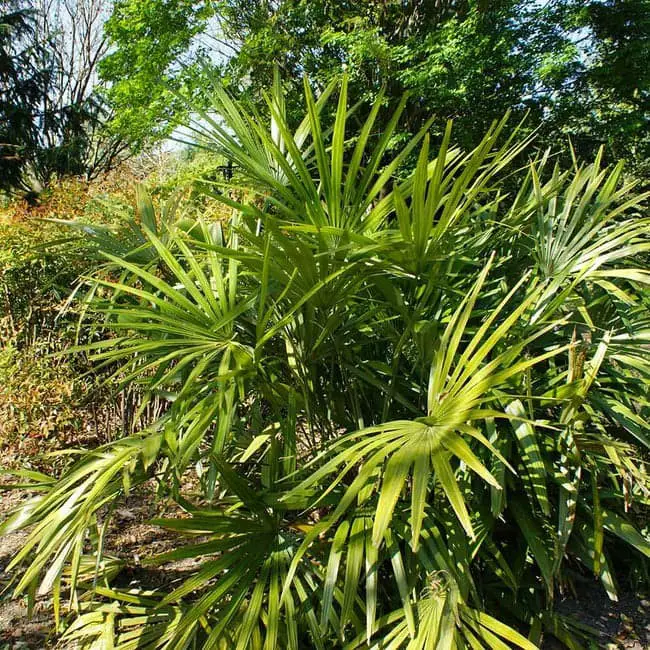
The needle palm, a compact species that reaches approximately six feet in height, earns its name from its elongated, sharply pointed leaves. A native of the southeastern United States, this palm can be found thriving in Georgia, Alabama, and Florida. Notably, it is one of the more hardy palms capable of growth in cooler climates, with some tolerance for snowfall.
As such, it’s often utilized as an ornamental feature in gardens and public spaces, adding a touch of tropical charm to its surroundings.
Pindo Palm (Butia capitata).
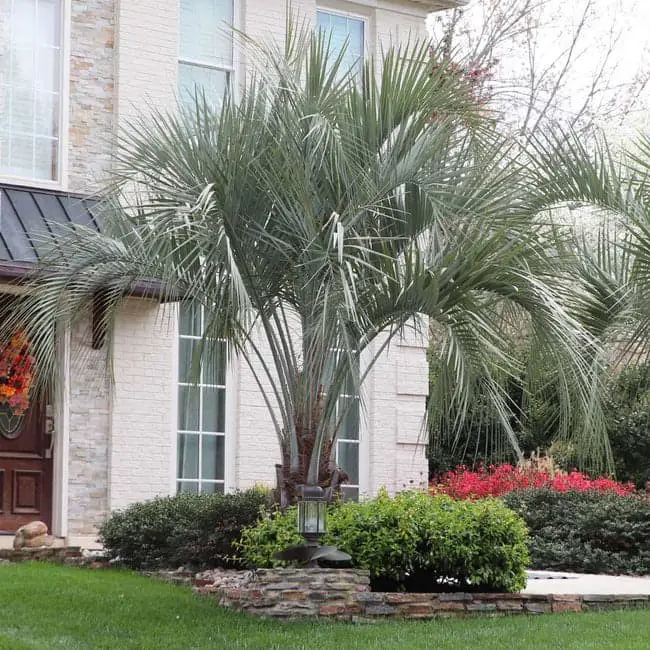
Pindo palm trees, native to South America, thrive in Georgia’s climate, where they’re the hardiest species of palm tree, tolerating temperatures as low as 15 degrees Fahrenheit. Reaching heights of up to 20 feet and living for approximately 30 years, Pindo palms are a popular choice for landscaping in parks and gardens, and their versatile fruit is used in the production of palm oil.
Beyond their aesthetic appeal, these palms have a significant impact on the environment, purifying the air by absorbing carbon dioxide and releasing oxygen, as well as reducing noise pollution. As a vital food source, Pindo palm fruits are devoured by birds, monkeys, and bats, while its leaves provide shelter for lizards and snakes.
Queen palm (Syagrus romanzoffiana).
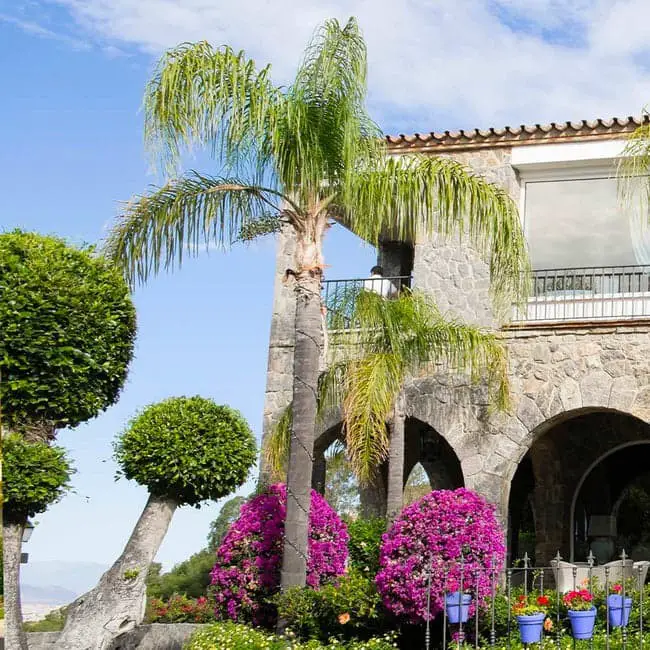
The queen palm stands out with its slender profile, reaching heights of up to 60 feet. Originally hailing from Brazil, this ornamental gem has spread its charm across the globe, including the United States. Its unique feature is the long, feathery leaves that range in hue from green to blue-green. As a popular choice for landscaping, the queen palm brings elegance and sophistication to outdoor spaces.
When it comes to climate, the queen palm is quite specific – it thrives in full sun and well-drained soil with a sandy texture. Anything less than these conditions would put this beauty out of its comfort zone. Fortunately, once established, the queen palm requires minimal upkeep, making it an ideal option for those looking for a low-maintenance addition to their outdoor decor.
Sabal Palm (Sabal palmetto).
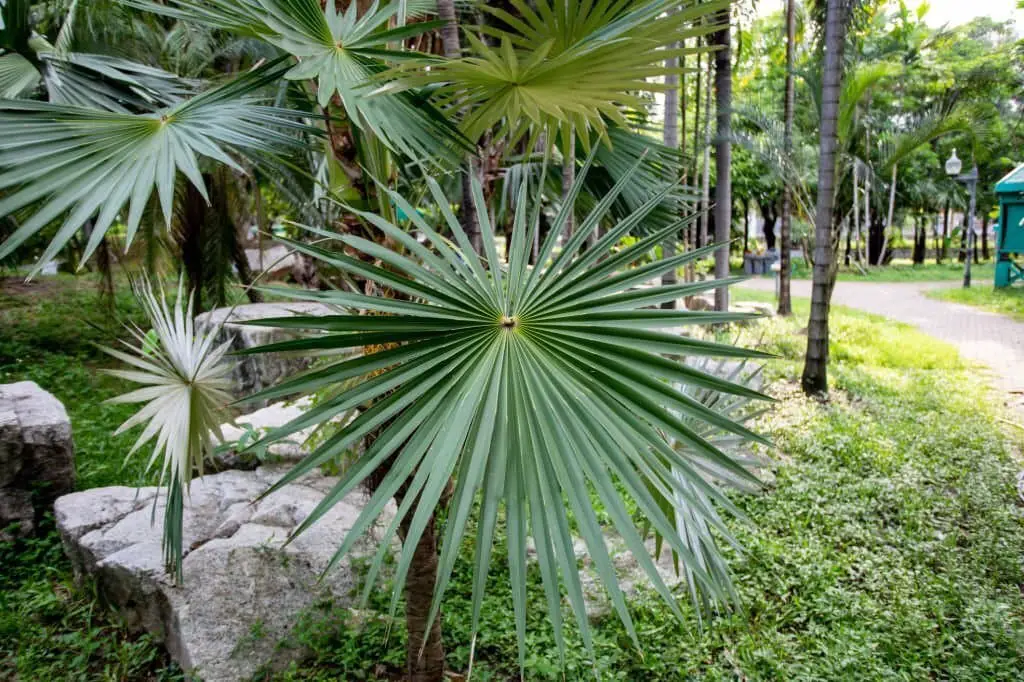
In the southeastern United States, the palmetto palm holds a special significance as the state tree of both South Carolina and Georgia. This majestic tree is also a popular choice for urban landscapes, particularly in Miami and other parts of southern Florida where it thrives as a common street tree. With its sturdy trunk reaching heights of 50-70 feet (15-21 meters), the palmetto palm is an impressive sight to behold.
Measuring up to 18 inches (46 centimeters) in diameter, the trunk stands erect and proud. Notably, this species is monoecious, meaning that each individual tree produces both male and female flowers. These tiny white blooms cluster at the base of the leaves, giving way to a fruit that’s equally impressive – a dark-colored drupe roughly an inch (25 millimeters) in diameter.
Saw Palmetto Palm (Serenoa repens).
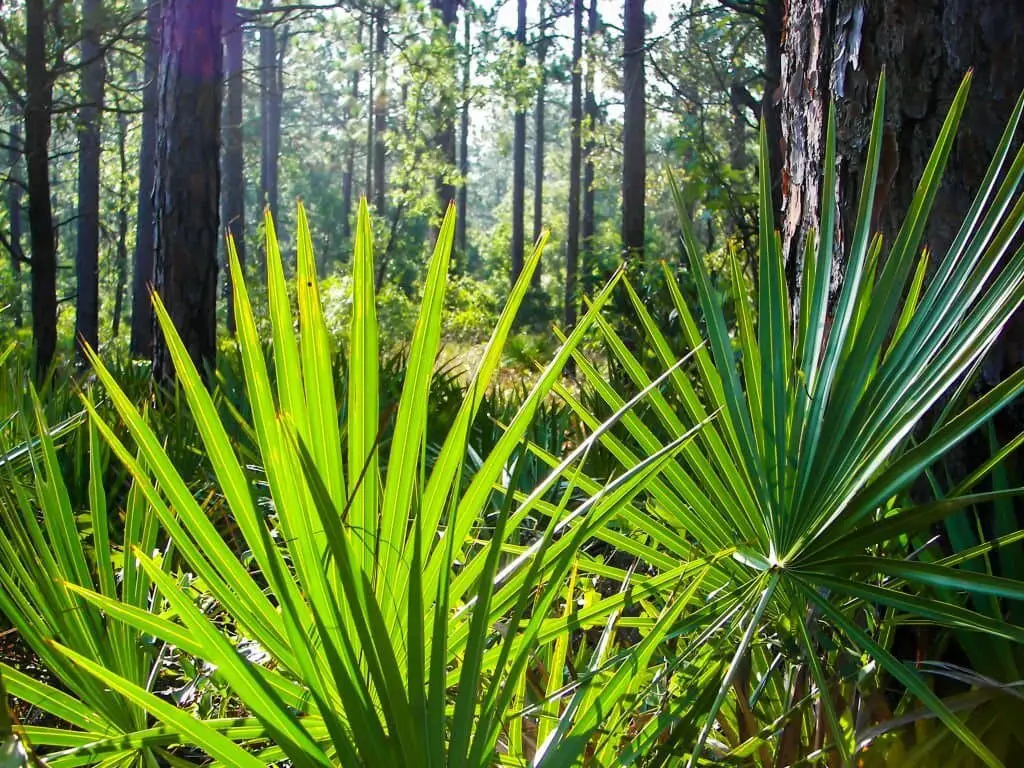
Characterized by fronds resembling fans rather than the typical feather-like leaves of other palms, this unique species boasts a distinct appearance. Standing tall at up to 15 feet, its trunk is wrapped in a brown fiber known as coontie, providing a natural camouflage in its sandy soil habitat found throughout Georgia.
Silver Saw Palmetto (Serenoa repens).
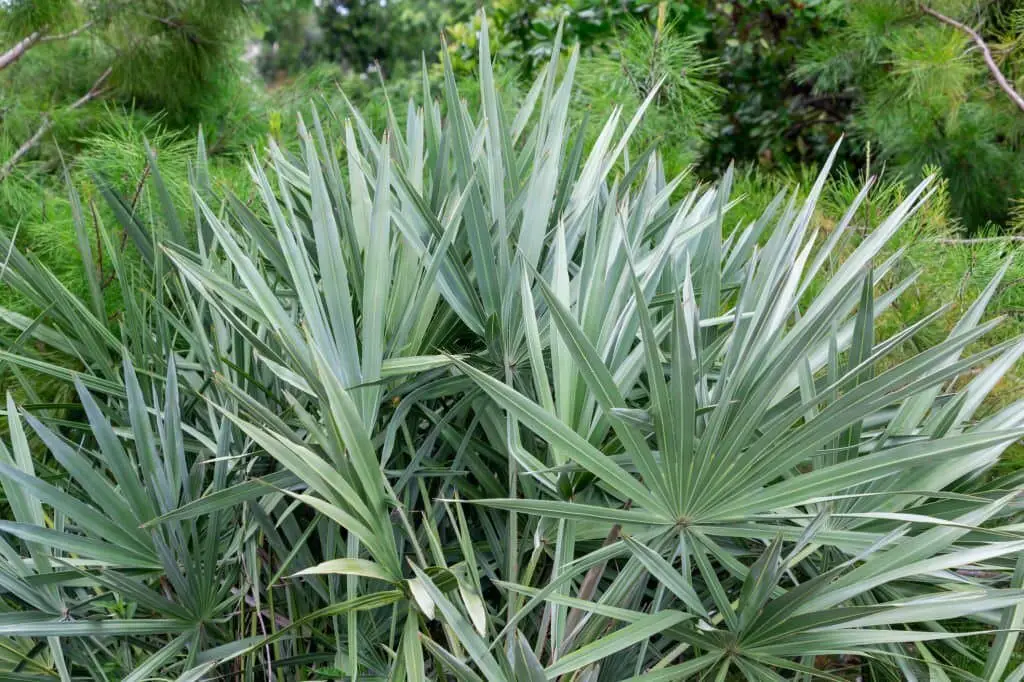
The silver saw palmetto, a species of palm native to the southeastern United States, including Georgia, boasts striking silvery-white leaves that give it its distinctive name. Growing up to 15-20 feet tall with a trunk diameter ranging from 12-24 inches, this slow-growing yet drought-tolerant palm tree is an attractive addition to any landscape. As an evergreen species, the silver saw palmetto produces small white flowers and bears black drupes approximately 0.75 inches in diameter.
Its versatility has made it a popular choice for landscaping in Georgia and surrounding southeastern states.
True Date Palm (phoenix dactylifera).
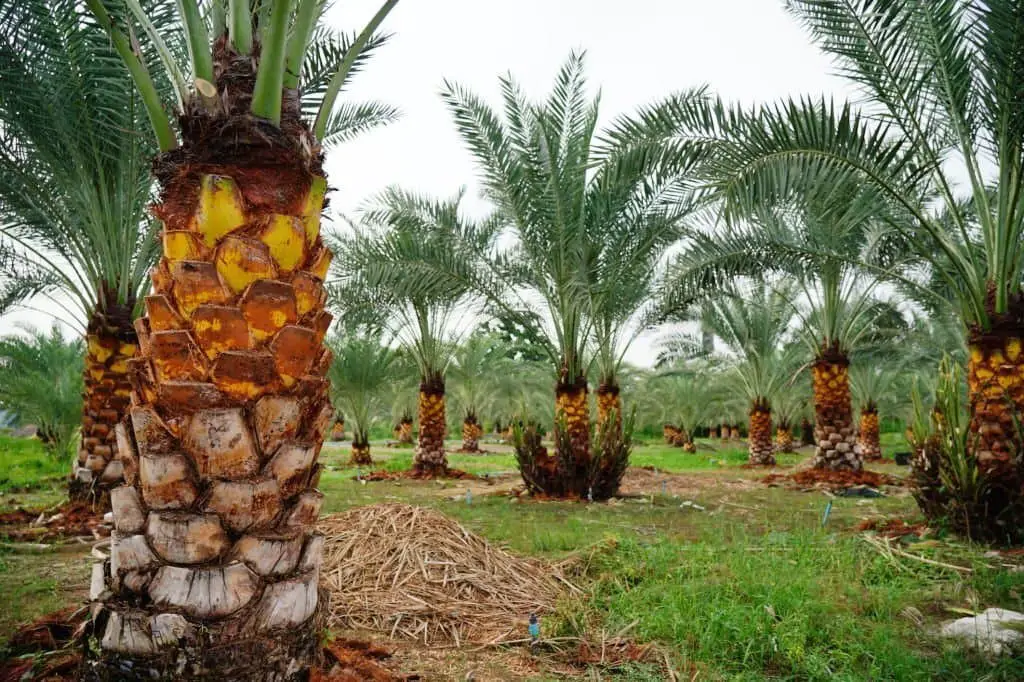
For centuries, humans have savored the sweet and nutritious fruit of the date palm, which has been a staple in many diets around the world. Beyond its edible bounty, the tree also provides strong wood that’s often used in construction projects, making it an incredibly versatile species. Native to arid regions, the date palm typically grows between 20-40 feet tall, thriving in full sun and well-drained soil.
Windmill palm (Trachycarpus fortune).
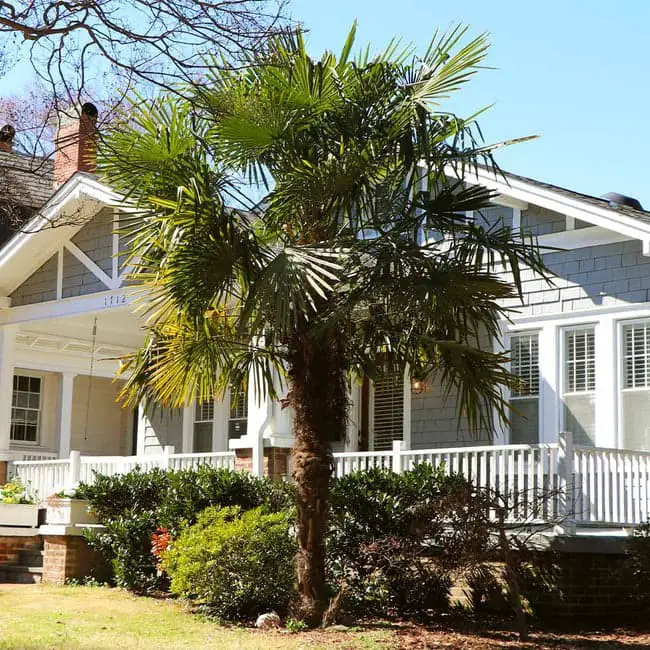
Georgia gardeners are fortunate to have access to one of the most resilient palm tree species, the windmill palm. This hardy tree is capable of thriving in cold temperatures and requires minimal upkeep. Native to China, the windmill palm was introduced to the United States in the late 1800s and has since become a popular choice for ornamental plantings in gardens and parks across the state.
Characterized by its impressive fan-shaped leaves, the windmill palm can reach heights of up to 20 feet, making it a striking addition to any outdoor space.
How to plant palm trees in Georgia.
To set up your palm tree for success, start by identifying a spot in your yard that receives ample sunlight and boasts well-drained soil. This will ensure the tree gets the right conditions to thrive from the get-go. Next, prepare the site by digging a hole at least twice as wide as the root ball of your palm tree. The depth should be sufficient so that the root ball is level with the surrounding ground.
As you fill in the hole, take care to pack the soil firmly around the roots to secure the tree’s foundation. Finally, give your palm tree a good soaking to settle it into its new home. With these simple steps, you’ll be enjoying your beautiful palm tree in no time.
Can a palm tree survive in Georgia?
Georgia’s warm climate makes it an ideal location for cultivating palm trees. The hot summers and mild winters provide a perfect environment for these tropical plants to flourish. However, not all palm tree varieties are well-suited for Georgia’s climate. To ensure success, homeowners must select a variety that can withstand the state’s heat and humidity. Some palm tree species are more cold-hardy than others, allowing them to thrive in slightly cooler temperatures.
When choosing a palm tree for Georgia, it’s crucial to opt for a variety that is known for its tolerance of high temperatures and humidity levels.
Conclusion
Ultimately, Georgia’s diverse array of palm trees offers countless options to cater to various preferences and requirements. From aesthetically pleasing landscaping additions to functional solutions like providing shade, there exists a palm tree that can perfectly harmonize with your vision. To find the ideal palm tree for your home, take some time to explore the numerous species available and discover the perfect fit.
Related Posts
As you explore online plant nurseries, you’ll likely come across an impressive array of tree varieties. From the majestic apple trees to the evergreens that dot the landscape, each species has its unique characteristics and growing requirements. But what if you want to take your knowledge to the next level? Perhaps a career in tree care as an arborist is calling your name. In this context, understanding how trees impact properties is crucial.
Not only do they enhance a home’s appeal, but they can also have a profound effect on its value and even environmental sustainability. On the flip side, knowing when to remove a tree from your property is equally important. It’s all about finding that perfect balance. Meanwhile, enthusiasts of tropical plants may be excited to learn more about the lady palm (Rhapis excelsa), which requires specific care and growing conditions.
And for those looking to grow organic blueberry plants in their garden, there are certain tips and tricks to keep in mind.


